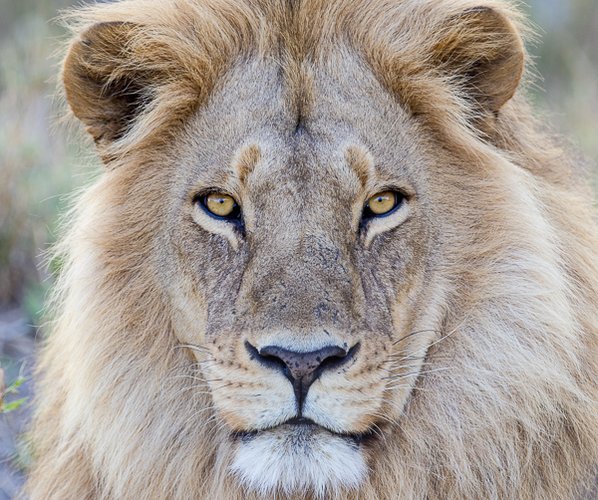Oryx
The desert antelope
Behavior and diet
Two species of oryx can be found in Africa: Eastern African oryx and South Africa oryx, also known as gemsbok. Both are part of the Genus: Oryx. Oryx prefer semi-arid to arid conditions and can do will in areas with little precipitation. Oryx feed on and can digest desert plantation, such as thorny shrubs, wild melon and coarse grasses. They are also well-adapted to deal with extremely hot climates. They are able to cool the blood flowing to their brain via capillaries in their nose as they breathe in oxygen. During warmer months, oryx will dig shallow depressions in shady areas, where they will rest until temperatures drop. They will change their feeding patterns to eat when plants have most moisture—early morning and evening. The oryx is said to have an excellent sense of smell and can detect rainfall from over 80 km away, which the herd will then follow. Gestation period is around 8 months.
All oryx are easily identified by their two large, spiral horns that come out in a v-shape from their head. They are beige in color, with lovely black and white markings on their body and face.
Eastern African oryx
The Eastern Africa oryx is smaller than the gemsbok, with males weighing around 80kg. There are two sub-species of Eastern African oryx: Oryx beisa beisa and Oryx beisa callotis, commonly known as the fringe-eared oryx. Fringe-eared are found only in Kenya and Tanzania, around the border of the two countries, such as Serengeti and Masai Mara. The fringe-eared is primarily beige with black markings on the face. It does not have the elaborate leg markings or white coloring of other oryx species.
Oryx beisa, or the common beisa oryx, is beige in color and has markings on its legs and white on its face and legs. Oryx beisa is losing habitat and numbers have declined. It is now mainly found in Ethiopia and northern Kenya.
Gemsbok
Gemsbok are the large oryx specie, with males weighing between 180 to 240kg. The markings on the gemsbok are particularly attractive, with lovely black and white markings on the face and legs, with the bottom portion of the legs being white and giving the appears that they are wearing white socks. Gemsbok live in herds of around 8-40 animals, with a dominant male. Gemsbok are found in Botswana, Namibia, South Africa and a small part of Zambia.
Did you know?
- Oryx can smell rainfall from 50 miles away
- An oryx tail is always swishing, even when it's standing still

 Botswana
Botswana
 Kenya
Kenya
 Namibia
Namibia
 South Africa
South Africa
 Tanzania
Tanzania
 Zambia
Zambia
